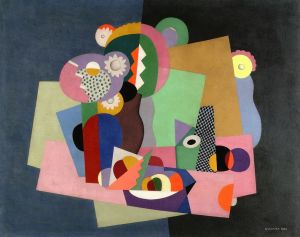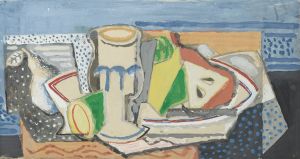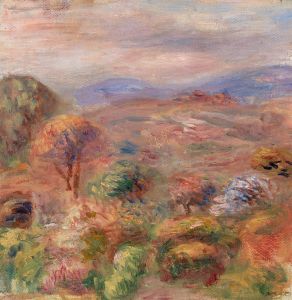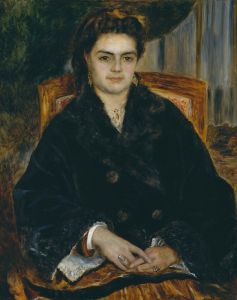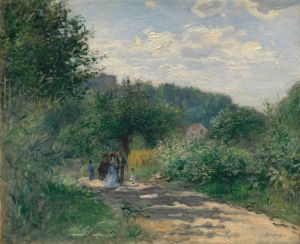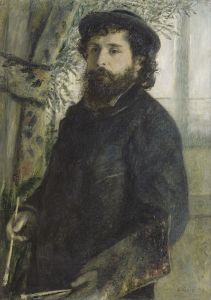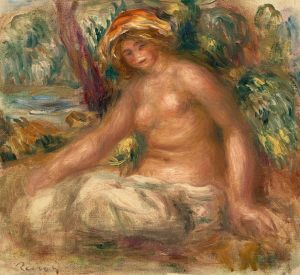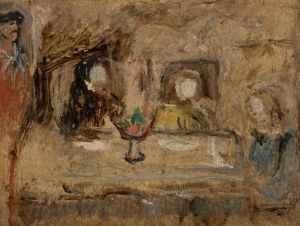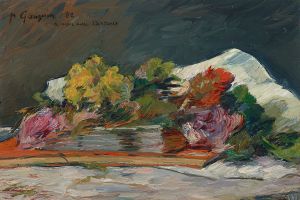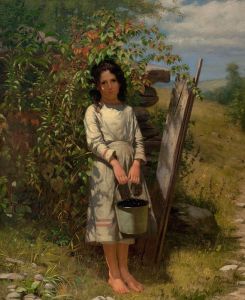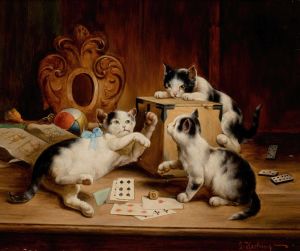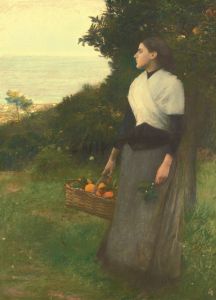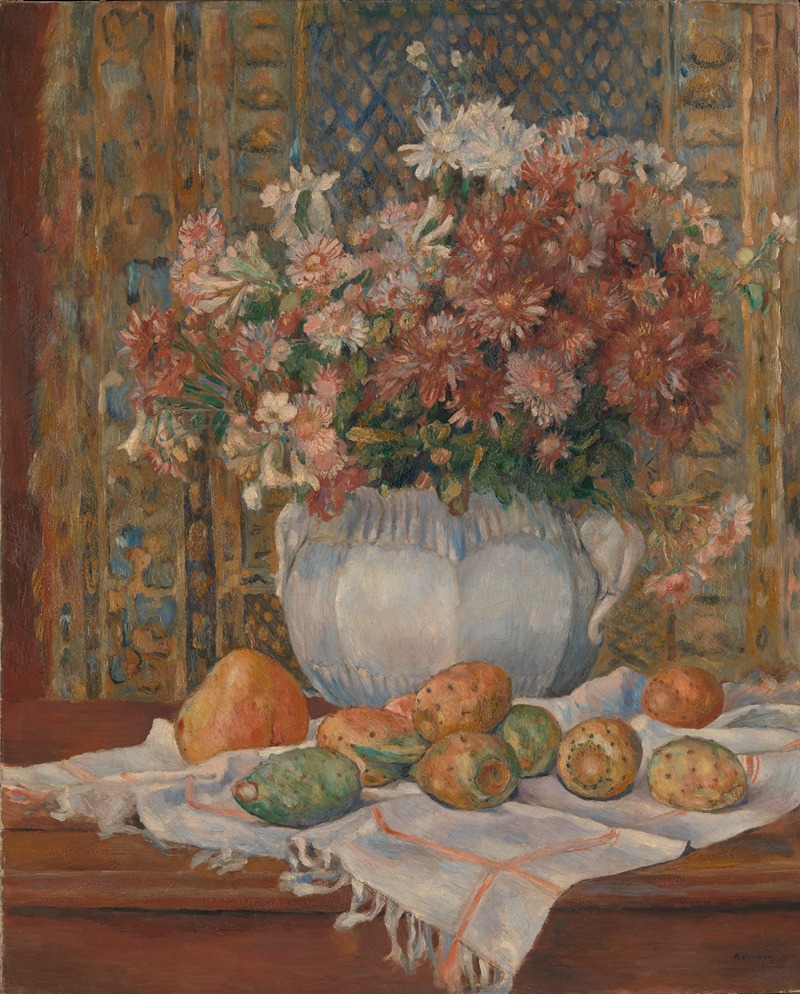
Still Life with Flowers and Prickly Pears
A hand-painted replica of Pierre-Auguste Renoir’s masterpiece Still Life with Flowers and Prickly Pears, meticulously crafted by professional artists to capture the true essence of the original. Each piece is created with museum-quality canvas and rare mineral pigments, carefully painted by experienced artists with delicate brushstrokes and rich, layered colors to perfectly recreate the texture of the original artwork. Unlike machine-printed reproductions, this hand-painted version brings the painting to life, infused with the artist’s emotions and skill in every stroke. Whether for personal collection or home decoration, it instantly elevates the artistic atmosphere of any space.
Pierre-Auguste Renoir, a prominent French artist and a leading figure in the Impressionist movement, is renowned for his vibrant light and saturated color, most often focusing on people in intimate and candid compositions. However, he also created a number of still life paintings, one of which is "Still Life with Flowers and Prickly Pears."
"Still Life with Flowers and Prickly Pears" is a testament to Renoir's ability to infuse life and vibrancy into the still life genre, which traditionally focused on inanimate subjects. This painting showcases Renoir's skillful use of color and light, capturing the delicate beauty of flowers alongside the intriguing texture of prickly pears. The composition is a harmonious blend of natural elements, demonstrating Renoir's keen eye for detail and his ability to convey the essence of his subjects.
Renoir's still lifes, including this one, often reflect his interest in the interplay of colors and the effects of light. In "Still Life with Flowers and Prickly Pears," he employs a rich palette to bring out the vivid colors of the flowers, contrasting them with the more subdued tones of the prickly pears. The juxtaposition of the soft petals and the rough skin of the pears adds a tactile quality to the painting, inviting viewers to appreciate the textures as well as the visual appeal.
The painting is also indicative of Renoir's broader artistic philosophy. Unlike some of his contemporaries who focused on the more somber aspects of modern life, Renoir celebrated beauty and sensuality in his work. His still lifes are no exception, often exuding a sense of joy and appreciation for the simple pleasures of life. "Still Life with Flowers and Prickly Pears" embodies this approach, presenting a scene that is both aesthetically pleasing and emotionally uplifting.
Renoir's technique in this painting, as in many of his works, involves loose brushwork that captures the essence of the subject without becoming bogged down in minute details. This approach allows the colors to blend and interact on the canvas, creating a sense of movement and life. The flowers appear almost to sway in a gentle breeze, while the prickly pears sit solidly, grounding the composition.
While specific details about the creation of "Still Life with Flowers and Prickly Pears," such as the exact date of its completion or its current location, are not widely documented, the painting remains an important part of Renoir's oeuvre. It exemplifies his mastery of color and form, as well as his ability to find beauty in the everyday.
Renoir's still lifes, though perhaps less celebrated than his portraits and figure paintings, offer valuable insight into his artistic process and priorities. They reveal his dedication to exploring the possibilities of color and light, as well as his enduring fascination with the natural world. "Still Life with Flowers and Prickly Pears" is a fine example of these themes, capturing the viewer's attention with its vibrant colors and dynamic composition.
In summary, "Still Life with Flowers and Prickly Pears" by Pierre-Auguste Renoir is a beautiful representation of the artist's skill and artistic vision. Through his masterful use of color and light, Renoir transforms a simple arrangement of flowers and fruit into a lively and engaging work of art, reflecting his love for beauty and his ability to convey it through his paintings.





